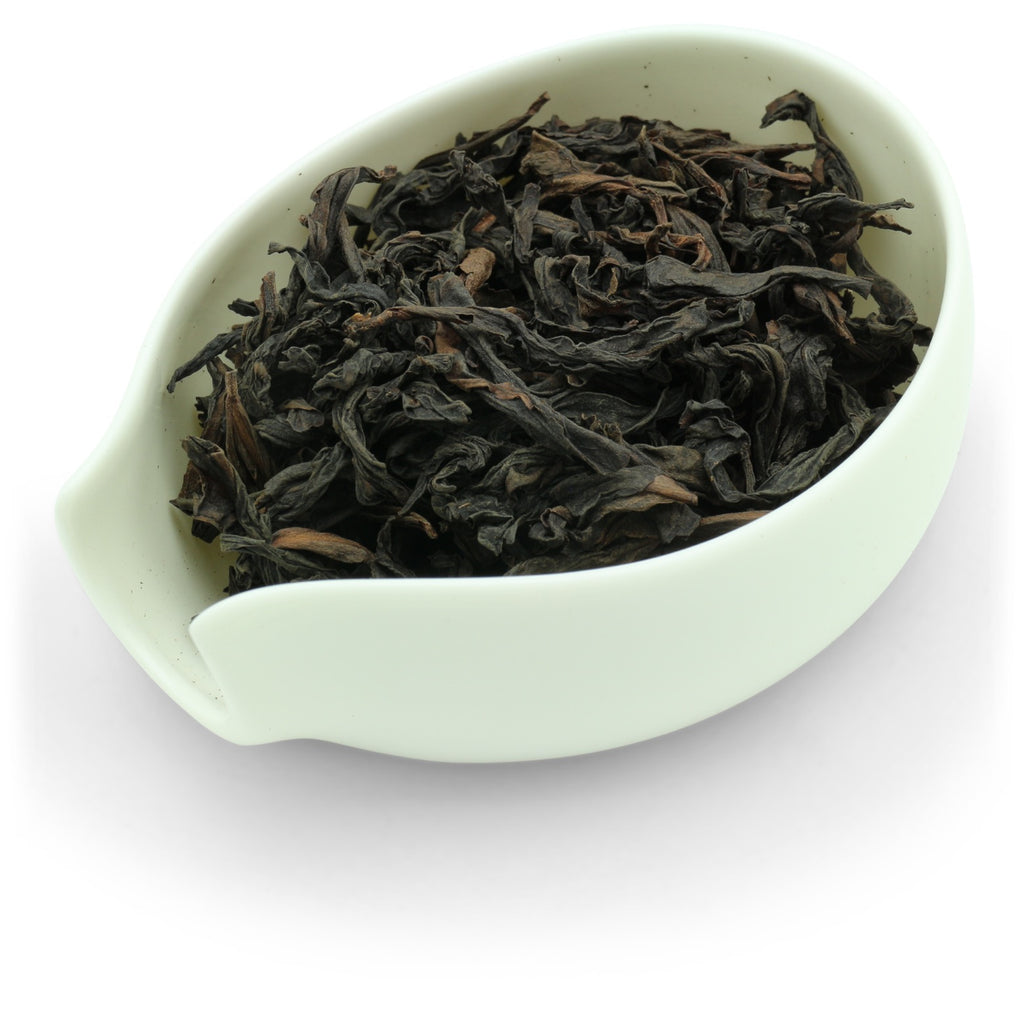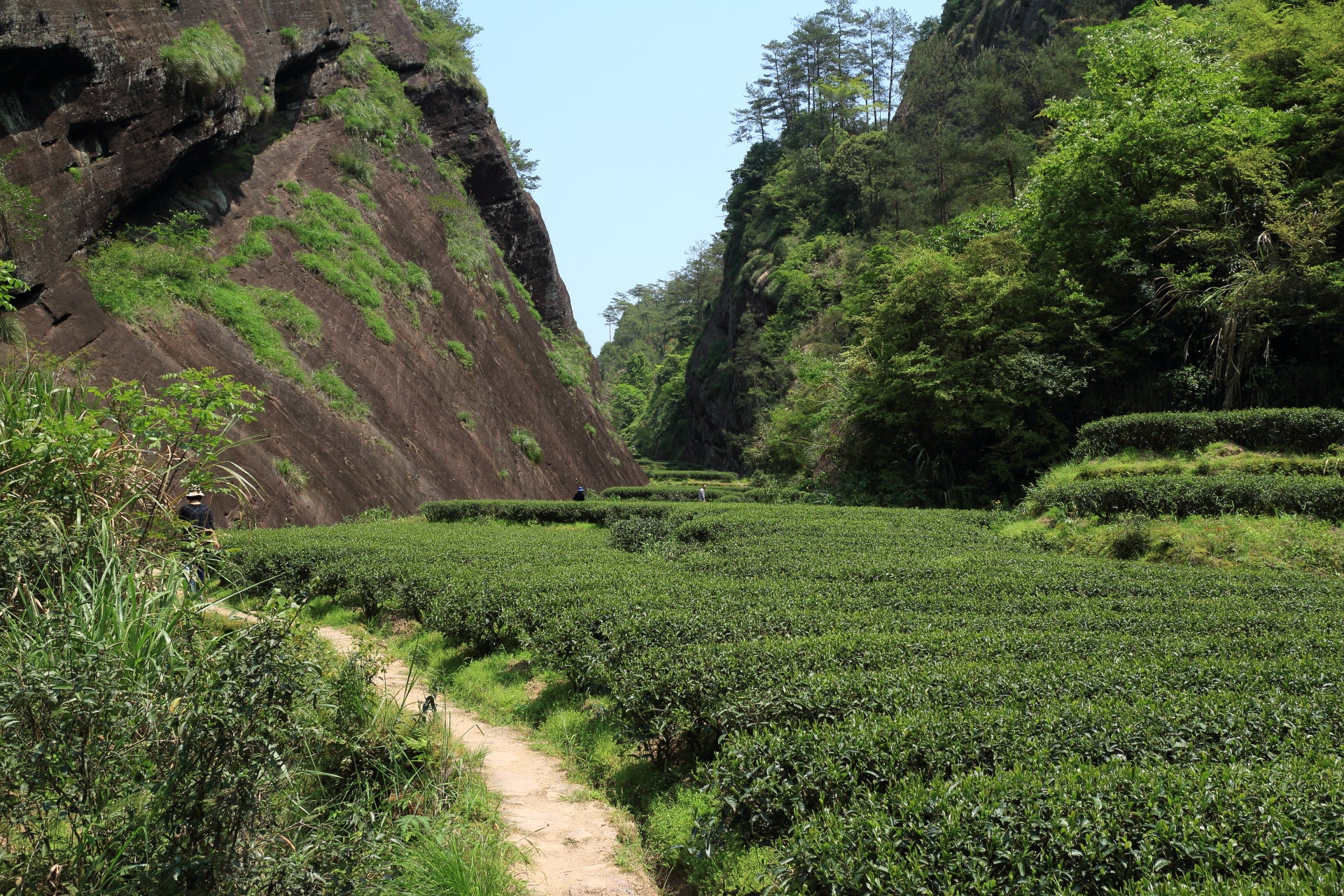Matouyan Shui Xian
Wenn eine Teesorte ihr platonisches Ideal haben könnte, wie würde sie dann schmecken? Für manche könnte dieser Shui Xian ein solcher Tee sein: warm, aber nicht scharf, seine Röstung verwandelt sich in eine sanfte Schärfe und Süße, der Aufguss umspült die Zunge und hinterlässt eine deutliche Milchigkeit, die durch eine leichte Herbheit ergänzt wird. Noten von Zimt, Muskatnuss und Ingwer entspannen den ganzen Körper, und ein Toffee-Aroma verführt zu einem weiteren Schluck. Man denkt an aufgeschäumte Milch oder dampfenden Salep, die man im tiefen Winter genießt, aber in einem Getränk, das weich genug ist, um erfrischend zu sein. Für alle, die die Anziehungskraft der Felsen(-tees) spüren, ist dieser Tee eine Kostprobe wert.
- HERKUNFT: Matouyan, Wuyishan, Nanping, Fujian, China
- WAS DER NAME BEDEUTET: Pferdekopfklippen-Wassergeist (ma tou yan shui xian)
- ZÜCHTUNG: Shui Xian
- GEERNTET IM: Frühen Mai 2016
- RÖSTUNG: Dreimal
- GESCHMACK: Geschäumte Milch, Zimt, Toffee
- Menge: 6g / 500ml
- Wassertemperatur: 90°C
- Ziehzeit: 5 Min.
- Menge: 3g / 100ml
- Wassertemperatur: 90°C
- 4 Aufgüsse: 45, 60, 60, 90 Sek.
Die besten Ergebnisse beim Gongfu Cha erzielen Sie, wenn Sie den Tee im traditionellen Gaiwan oder in einer Yixing-Teekanne zubereiten. Eine zu hohe Wassertemperatur könnte die Blätter verbrühen und zu einem bitteren Geschmack führen.
Zusätzliche Informationen
Authentic Wuyi Yan Cha is produced in the Wuyi Mount region, a UNESCO natural heritage site. The dramatic gorges of the Nine Bend River are surrounded by a largely intact subtropical forest and smooth cliffs of black-brownish rocks. The tea plants grow in narrow valleys, next to the cliffs, in a mineral-rich soil.
Today Wuyi Yan Cha is one of the most valued teas in China. Because it has become a status symbol, many wealthy Chinese are willing to pay a fortune for it without even knowing how a proper Wuyi Yan Cha should taste. The result has been prices inflating to unjustified level and quality often sacrificed for quantity.
Unique to the Wuyi Yan Cha is a mineral savor coming from the soil and the surrounding cliffs. Being the oolong with the highest fire finish, fresh Yan Cha may as a result be strong and pungent. Sharpness and too-prominent astringency subside upon ageing. Premium high-fire Yan Cha tastes better after a few years of storage. Use a Yixing teapot to soften the tea, should it be too astringent for your palate.
The overall tasting profile is rich, complex, and deep. Depending on cultivar and environment, the mineral-roasted flavor is refined by floral, fruity, nutty or woody accents.










